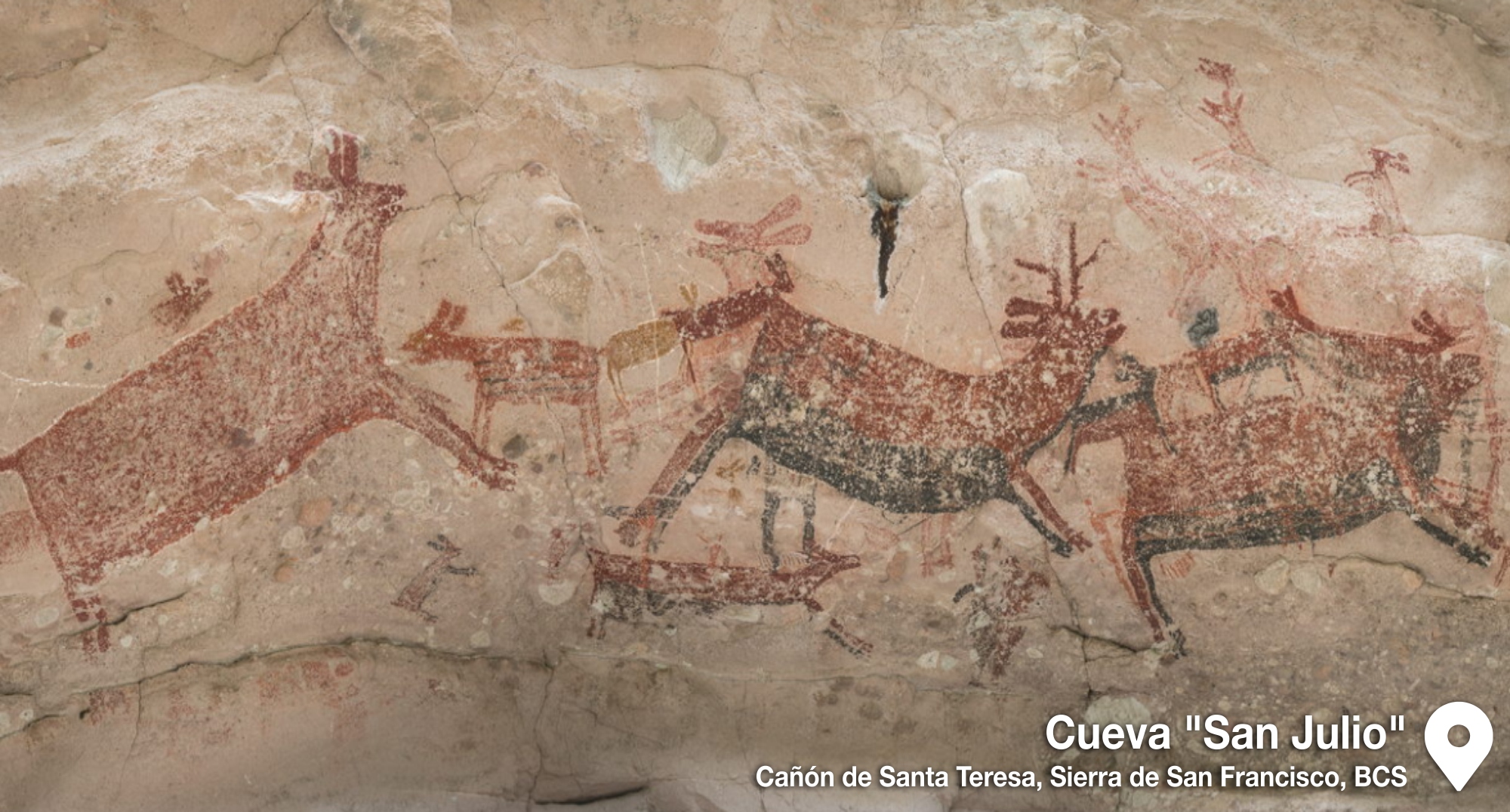Cueva de San Julio

The cave of San Julio is part of the pictorial ensemble of
the canyon of Santa Teresa, and like the other sites in this area the paintings
are constituted by “ideograms”, that is to say symbolic representations that
had their phonetic correspondence in languages hitherto unknown by We, but
whose approximation in historical time would correspond to the Cochimí,
Guaycura and Pericú languages, since these were those registered by different
observers arriving at the peninsula from 1535 until the 18th century. The cave
paintings of the cave of San Julio are the best preserved by virtue of the
natural shelter they have. They are also the best known since this site has
been reproduced on a natural scale in the Museum of the Californias of the
Tijuana Cultural Center, in the city of Tijuana, Baja California.
PAINTINGS AND
HERITAGE
With the reproduction of some fragments of monumental sites of rock art in several museums of the country, the Mexican government fulfills the obligation to bring this heritage closer to those who can hardly access it, since many of the sites like this one in the cave of La Soledad is located in one of the most inaccessible and distant places of the San Francisco mountain range. When we talk about the “heritage” referred to the cave paintings and the petrogravines of the peninsula, it can be described in different ways: archeological, historical, artistic, etc. As these collections are patrimonial, that is, they belong to all Mexicans, it is the obligation of the institutions to investigate, conserve and disseminate them to make their permanence and enjoyment possible for all of us and also for visitors from other cultures.
Detalles
Lugar: Mulegé, Mulegé
Dirección: Camino a San Francisco de la Sierra, Km 36, Mulegé, Baja California Sur
Página web: Sendarupestre.cultura-bcs.gob.mx

